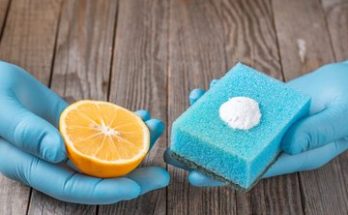Activity 4.4 in the chapter “Acids, Bases, and Salts” is a comprehensive experiment designed to enhance students’ understanding of the reactions of acids and bases. This activity employs the use of litmus paper, turmeric paper, and China rose solution to test various chemical substances, providing a deeper insight into the nature of these chemicals.
Activity 4.4- Understanding Acid-Base Reactions
Materials Needed
- Acids- Hydrochloric acid, Sulphuric acid, Nitric acid, Acetic acid
- Bases- Sodium hydroxide, Ammonium hydroxide, Calcium hydroxide (lime water)
Indicators Used-
- Litmus Paper- Changes colour based on the acidity or basicity of a solution.
- Turmeric Paper- Turns red in basic solutions; no colour change in acidic or neutral solutions.
- China Rose Solution- Turns acidic solutions dark pink (magenta) and basic solutions green
- Safety equipment- Gloves, goggles
- Test tubes or beakers
Class 7 – Chapter 4- Acids, Bases, and Salts- An Overview of Activities
Table of Observations with Expected Results-
| S. No. | Name of Substance | Effect on Litmus Paper | Effect on Turmeric Paper | Effect on China Rose Solution |
|---|---|---|---|---|
| 1 | Dilute Hydrochloric Acid | Turns Red | No Change | Dark Pink (Magenta) |
| 2 | Dilute Sulphuric Acid | Turns Red | No Change | Dark Pink (Magenta) |
| 3 | Dilute Nitric Acid | Turns Red | No Change | Dark Pink (Magenta) |
| 4 | Dilute Acetic Acid | Turns Red | No Change | Dark Pink (Magenta) |
| 5 | Sodium Hydroxide | Turns Blue | Turns Red | Green |
| 6 | Ammonium Hydroxide | Turns Blue | Turns Red | Green |
| 7 | Calcium Hydroxide (Lime Water) | Turns Blue | Turns Red | Green |
Also Check – Indicators for Acid and Base- A Guide for Students
Conceptual Understanding
- Acids (Hydrochloric Acid, Sulphuric Acid, Nitric Acid, Acetic Acid)-
- Litmus Paper- Turns red, indicative of an acidic solution.
- Turmeric Paper- No significant change as turmeric doesn’t react with acids.
- China Rose Solution- Turns the solution dark pink or magenta, signifying an acidic nature.
- Bases (Sodium Hydroxide, Ammonium Hydroxide, Calcium Hydroxide)-
- Litmus Paper- Turns blue, identifying the presence of a base.
- Turmeric Paper- Turmeric paper turns red in basic solutions.
- China Rose Solution- Turns green, indicating a basic solution.
- Use of Multiple Indicators-
- Different indicators react uniquely with acids and bases. Turmeric turns red with bases but remains unchanged with acids. China rose solution turns acidic solutions magenta and basic solutions green.
- Neutralisation–
- The experiment also introduces the concept of neutralisation, where acids and bases can cancel each other’s effects.
- Observing Chemical Properties-
- By observing how each chemical reacts with different indicators, students can infer the chemical properties of acids and bases.
- Safety in Chemistry-
- Emphasises the importance of safety while handling chemicals, an essential practice in any scientific experiment.
Also Check – What is a Neutralisation Reaction?- Explained
Learning Outcomes
- Understanding of Acids and Bases- Students learn to differentiate between acids and bases using various indicators.
- Chemical Reaction Observation- Through this activity, students observe how different substances interact chemically with indicators.
- Practical Application of Theory- This experiment helps bridge the gap between theoretical knowledge and practical application.
- Critical Thinking and Analytical Skills- Students develop critical thinking by analysing and interpreting the results of their experiments.
Conclusion
Activity 4.4 offers a multifaceted approach to understanding acids and bases, engaging students in a practical investigation of chemical properties. By using multiple indicators, students gain a comprehensive view of how acids and bases react differently. This activity not only reinforces their theoretical knowledge but also enhances their practical skills and safety awareness in a laboratory setting, forming a crucial part of their scientific education.
Also Check- Young Explorer’s Guide to Acids and Bases
Also Chekc – Rapid Revision – Class 7 Science – Chapter 5-Acids, Bases and Salts
Also Check – NCERT Exemplar Solutions- Class 7 Science Chapter – 5- Acids, Bases and Salts
Also Check – Class 7- Chapter 4 – Acids, Bases and Salts – 4 Worksheets Solved and Unsolved
Also Check – NCERT Solutions For Class 7 Science Chapter 5 – Acids, Bases and Salts
Class 7 science -Chapter 5-Acids, Bases and Salts – Definition and Explanation of Important Keywords
Also Check -Class 7 science -Chapter 5-Acids, Bases and Salts- Complete Notes
